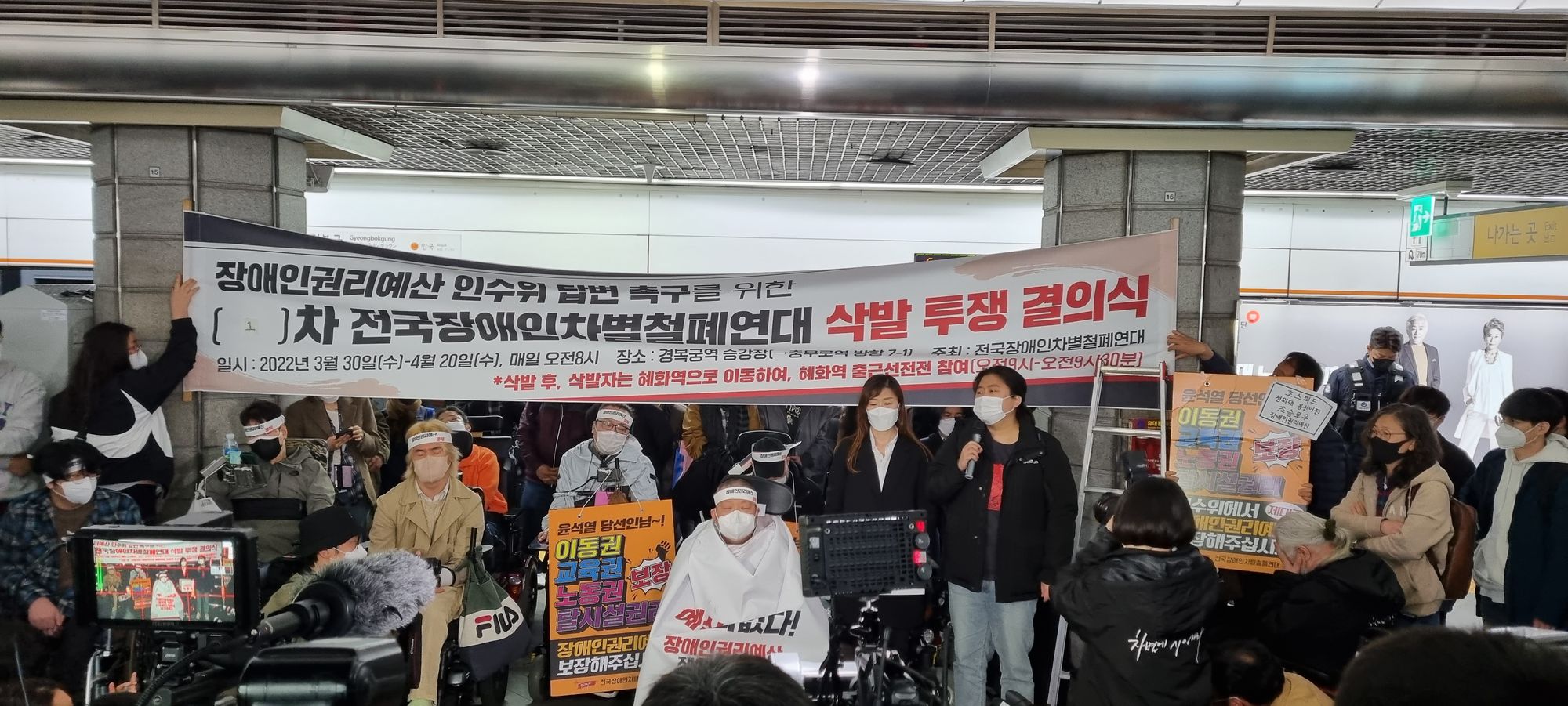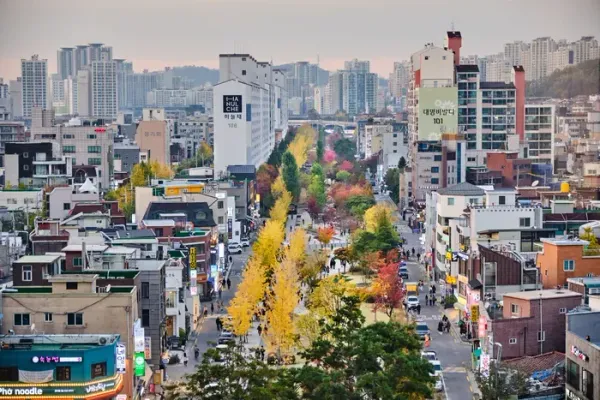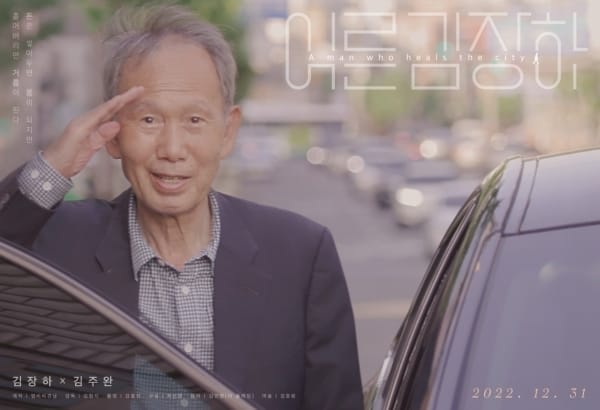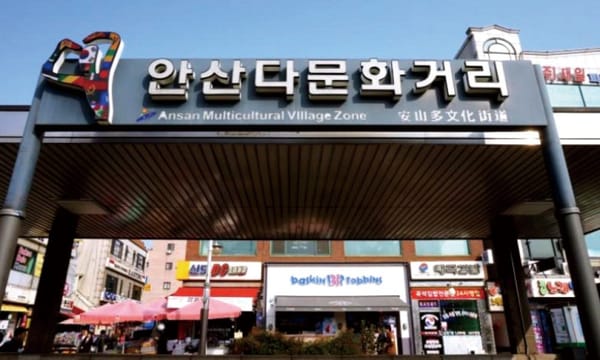Photo: Solidarity Against Disability Discrimination protests at a subway station in Seoul. Credit: The Blue Roof.
Political conviction trumps lived experience, according to a new survey by SBS News and D8aspring. For more than a year, activists from Solidarity Against Disability Discrimination (SADD) 전국장애인차별철폐연대 have been protesting Seoul Metro’s refusal to install elevators in several of its subway stations. (See previous coverage, “Disability Rights Group Protests for Public Transit.”) SADD activists have been protesting by taking the subway during rush hour, a simple but disruptive act that shows how inaccessible Seoul’s subways are for passengers with disabilities.
The SBS News survey, conducted in May 2022, studied whether the mode of transportation affected respondents’ support for the disability rights protests. The answer was no: among Seoul residents, whether they used the subway as their primary means of transit had no impact on whether they supported SADD’s protests, even though it was mostly Seoul subway riders who bore the brunt of delays caused by the protests. (A weak correlation did appear among subway riders in Gyeonggi-do Province 경기도, whose residents also use the Seoul Metro to commute from the suburbs into the city.)
Instead, support for disability rights is primarily correlated with - surprise - political orientation. Liberals support SADD; conservatives oppose them. Subway ridership does make a difference once broken down by ideology: liberal subway riders supported the SADD protests more strongly than liberals who didn’t ride the subway, while conservative subway riders opposed them more strongly than conservatives who did not ride the subway.
Socioeconomic factors such as income, education level and occupation also had no impact on approval for the subway protests. The only two socioeconomic factors that made a difference were age and gender: Young men largely oppose the SADD subway protests while young women largely support them, showing again the gender divide that is emerging as the primary battlefront in South Korean politics.








